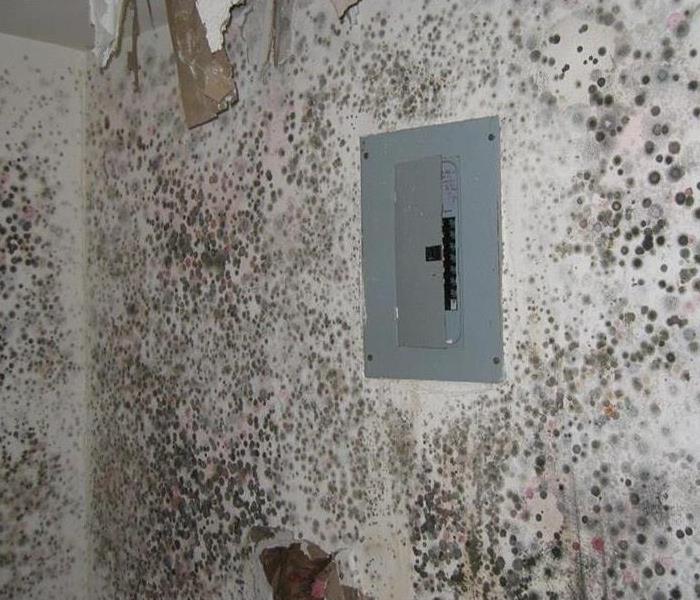Four Things You NEED To Know About Winter Mold
1/29/2021 (Permalink)
 Mold can occur all year round INCLUDING the winter. Here are some of our most asked questions about mold from Long Island homeowners
Mold can occur all year round INCLUDING the winter. Here are some of our most asked questions about mold from Long Island homeowners
SERVPRO of Freeport, Roosevelt is the leader on Long Island for Mold Removal. There is a common misconception that mold is a seasonal problem. Many homeowners think mold issues disappear when the weather is cold. But while temperature does affect the way mold grows, it’s a year-round problem for New Yorkers. It’s important to be aware of how and where mold can grow in your home, even during the winter months.
Keep reading to learn the answers to the top 5 most-asked winter mold questions our technicians are asked.
1. Can mold grow in cold temperatures?
YES! Mold requires three things to grow: enough moisture, an adequate food source, and the right temperature. But contrary to what many people think, mold DOES grow in cold temperatures.
Different types of molds thrive under different conditions, and some molds are more likely to grow in the winter months than others. Each type of mold has a minimum and maximum temperature ranges for growth, with many varieties of fungi thriving in environments between 60 and 80 degrees Fahrenheit. Unfortunately, the right temperature conditions for mold growth are also ideal for our comfort, and we tend to heat or cool our homes to stay within those parameters.
2. Does mold die in the winter?
Cold weather will not kill mold. Mold spores are opportunistic in the sense that they wait for the right conditions and then begin to spread.
Extreme temperatures do not kill mold, but they can deactivate them. Even when temperatures drop below freezing, mold spores don’t die; they simply become dormant and will begin to multiply and grow again as soon as the temperature rises.
That’s why controlling the temperature alone will not solve your mold problems. The key to removing mold from your home and keeping it from popping back up is to control humidity levels and prevent the buildup of moisture.
3. Why does mold grow on windows in winter?
The fall and winter months bring precipitation and dew, and surfaces in our homes that collect moisture, like window panes, are ideal places for mold to expand and grow.
Moisture collects on and around windows in the winter due to condensation, which happens when warm air hits a cold surface. When the temperature drops during the winter, the warm air in your home comes into contact with the cool glass of your window panes, depositing water vapor and leading to moisture buildup around your windows. That’s why moisture, and sometimes mold, tends to collect around windows during the colder months.
4. How do you prevent mold from growing in the winter?
Here’s what you can do in your home to prevent mold from growing and spreading during the winter months; these strategies will also help prevent and improve mold allergies:
- Try to keep humidity below 50% throughout your home at all times.
- Inspect pipes and fix plumbing leaks as soon as possible to prevent water from collecting.
- Use mold-killing cleaners in bathrooms and areas of your kitchen where moisture collects.
- Avoid having carpets or rugs near windows, sinks, or other places that tend to become wet.
- Inspect your air ducts and change the filters on your furnace regularly.
- Always use a ventilation fan during showers or baths.
- Clean your gutters regularly to prevent moisture from building up on collected debris.
- Get rid of old recycled material, newspapers, and any upholstery or fabric that has been exposed to moisture.
SERVPRO of Freeport, Roosevelt are fully-trained and certified to handle any mold issues you may be facing this Winter. Don't waste another day with mold in your home. Call for a FREE consultation for your Long Island home by calling 516-774-2200.






 24/7 Emergency Service
24/7 Emergency Service
